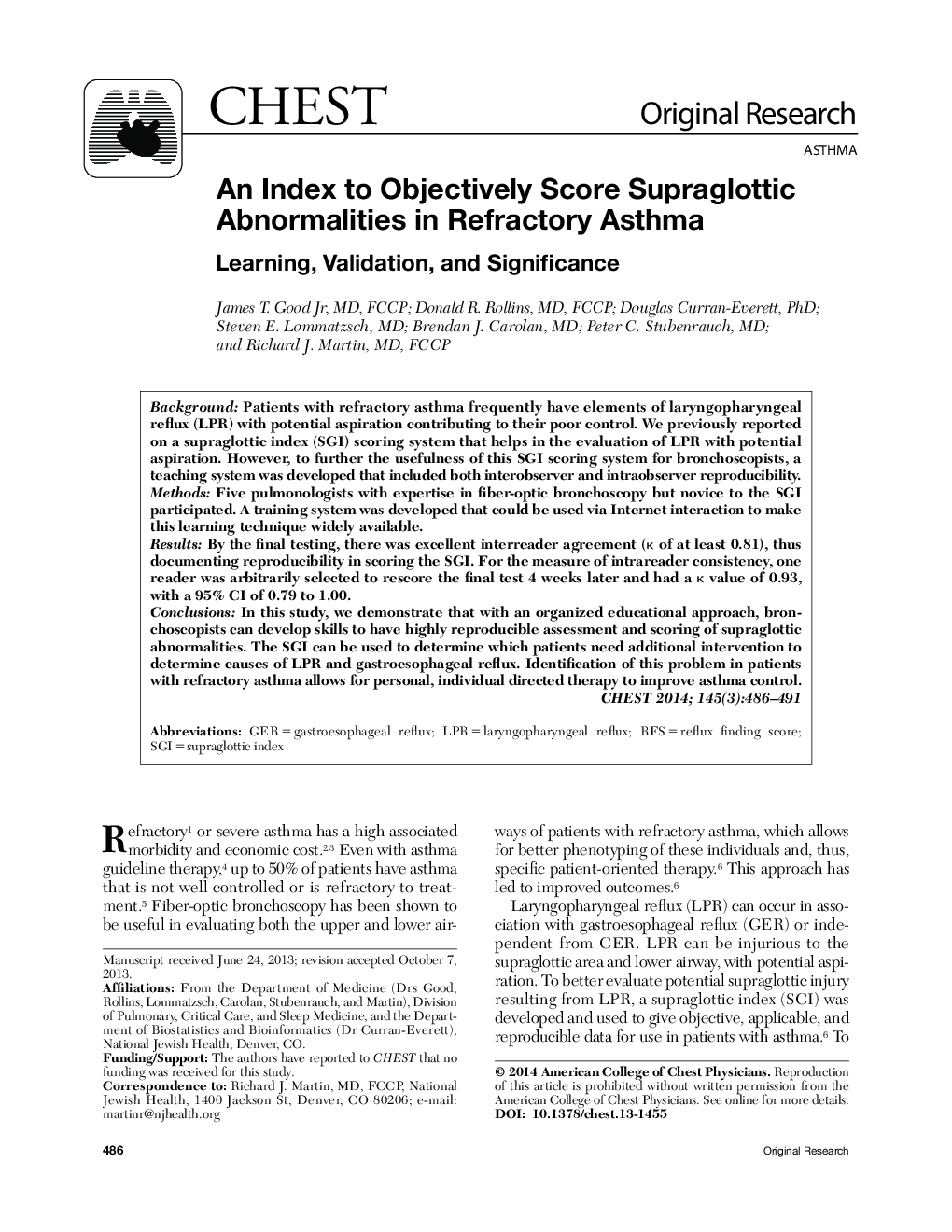| Article ID | Journal | Published Year | Pages | File Type |
|---|---|---|---|---|
| 2900016 | Chest | 2014 | 6 Pages |
BackgroundPatients with refractory asthma frequently have elements of laryngopharyngeal reflux (LPR) with potential aspiration contributing to their poor control. We previously reported on a supraglottic index (SGI) scoring system that helps in the evaluation of LPR with potential aspiration. However, to further the usefulness of this SGI scoring system for bronchoscopists, a teaching system was developed that included both interobserver and intraobserver reproducibility.MethodsFive pulmonologists with expertise in fiber-optic bronchoscopy but novice to the SGI participated. A training system was developed that could be used via Internet interaction to make this learning technique widely available.ResultsBy the final testing, there was excellent interreader agreement (κ of at least 0.81), thus documenting reproducibility in scoring the SGI. For the measure of intrareader consistency, one reader was arbitrarily selected to rescore the final test 4 weeks later and had a κ value of 0.93, with a 95% CI of 0.79 to 1.00.ConclusionsIn this study, we demonstrate that with an organized educational approach, bronchoscopists can develop skills to have highly reproducible assessment and scoring of supraglottic abnormalities. The SGI can be used to determine which patients need additional intervention to determine causes of LPR and gastroesophageal reflux. Identification of this problem in patients with refractory asthma allows for personal, individual directed therapy to improve asthma control.
